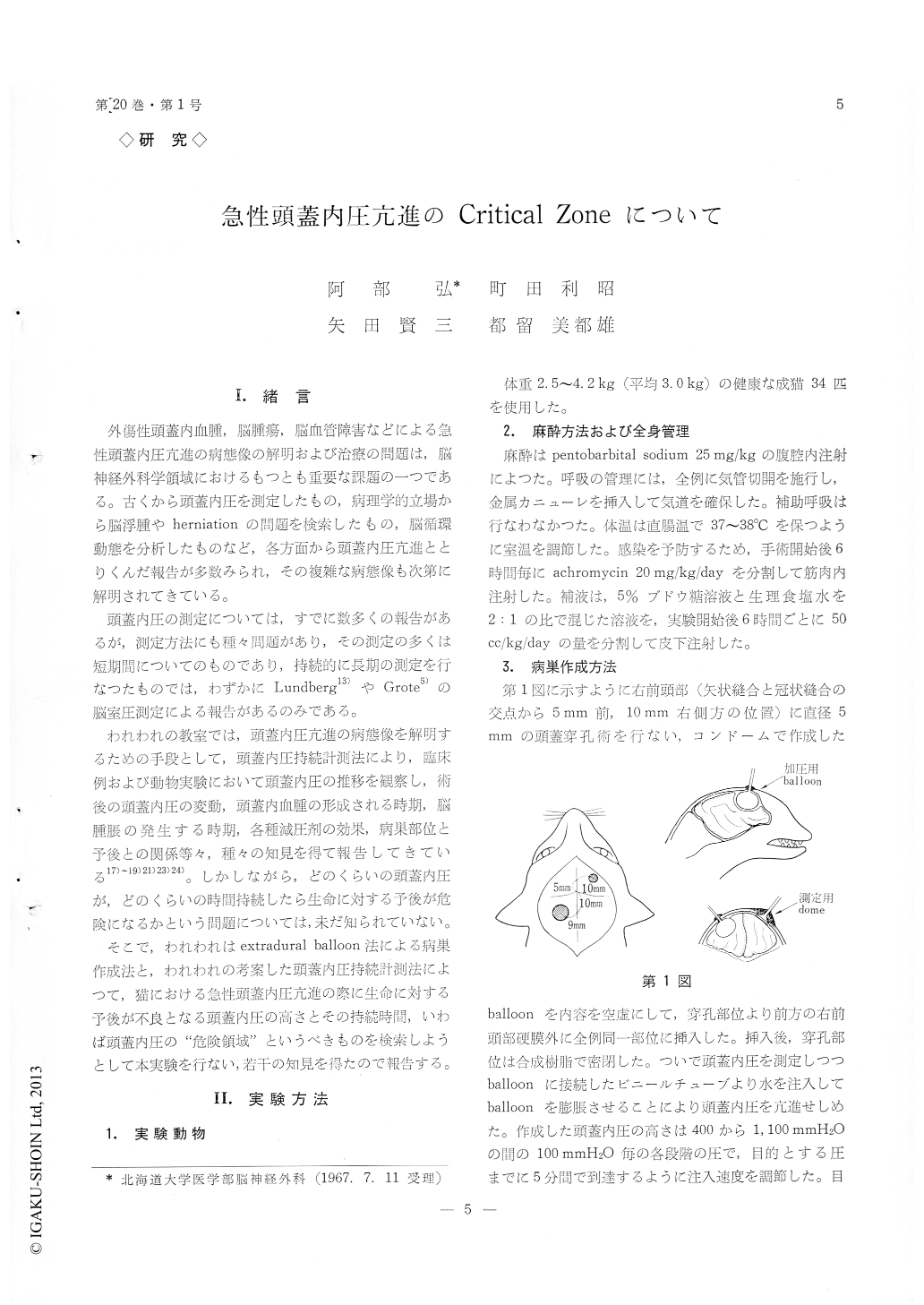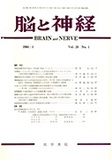Japanese
English
- 有料閲覧
- Abstract 文献概要
- 1ページ目 Look Inside
I.緒言
外傷性頭蓋内血腫,脳腫瘍,脳血管障害などによる急性頭蓋内圧亢進の病態像の解明および治療の問題は,脳神経外科学領域におけるもつとも重要な課題の一つである。古くから頭蓋内圧を測定したもの,病理学的立場から脳浮腫やherniatlonの問題を倹索したもの,脳循環動態を分所したものなど,各方面から頭蓋内圧亢進ととりくんだ報告が多数みられ,その複雑な病態像も次第に解明されてきている。
頭蓋内圧の測定については,すでに数多くの報告があるが,測定方法にも種々問題があり,その測定の多くは短期問についてのものであり,持続的に長期の測定を行なつたものでは,わずかにLundberg13)やGrote5)の脳室圧測定による報告があるのみである。
Although many experimental and clinical studies have been reported concerning the transtentorial herniation and the foramen magnum herniation, little are known as regard to degree and duration of the intracranial pressure necessary to produce such herniations. The experiment reported here was made in an attempt to clarify this point.
Method of experiment:
The experiment was carried out on an adult mongrel cats weighing between 2 and 4kg. under intraperitoneal pentobarbital anesthesia. An expand-ing intracranial lesion was made by inflating a condom bag which was placed in the extradural space of right frontal region (fig. 1). In order to measure the supratentorial intracranial pressure, a specially designed plastic dome was placed in the left parietal region (fig. 2). The water inside the dome was connected to a strain-gage pressure trans- ducer with polyethylene catheter. The extradural balloon was then inflated with water until the in- tracranial pressure reached 400 to 1,100 mmH2O and the pressure was maintained for 5 minutes to 2 hours by adding water into the bag. After the maintenance of the pressure for certain period of time, the inlet of the balloon was sealed and the intracranial pressure was recorded continuously with ink-writing oscil-lograph until the animals expired.
Results:
According to given pressure and the duration maintained, the course of the intracranial pressure change was different animal by animal. However, the course they took fell into three major types (fig. 4). They are as follows. Type A: Following to the end of inflation of the balloon, the pres-sure continues to elevate and animals expire within 3 hours. Type B: After the lesion was made, the pressure declines clown to 300 to 400 mmH2O within 2 to 4 hours and stay at this level for 8 to 10 hours and then suddenly re-elevates and the animals expire approximately 12 hours after the compressive lesion was made. Type C: The pressure continues to de-cline until it reaches to normal range and it never re-elevates. As shown on fig. 8, when the given pressure was high, there was a tendency for animals to take type A course even when the pressure was maintained fairly short period of time. When the given pressure was low, even when the pressure was maintained for fairly long period of time, animals showed tendency to become type C. In between these two, distributed the animals which took type B course.
Conclusions:
When the intracranial pressure was acutely ele-vated, depending on its degree and duration main-tained, the animals took 3 different courses. We found that even when the pressure was elevated to a fairly high level, if the duration was short, the animals took fairly benign course. On the other hand, even when the pressure was fairly low level, if the dura-tion maintained was long, the animals may take a malignent course. Therefore we feel that instead of the term "critical level of the intracranial pres-sure ", we should use a new term " critical zone of the intracranial pressure " which indicates the level and the duration of intracranial pressure which probably produces the type B course of the intrac-ranial pressure.

Copyright © 1968, Igaku-Shoin Ltd. All rights reserved.


